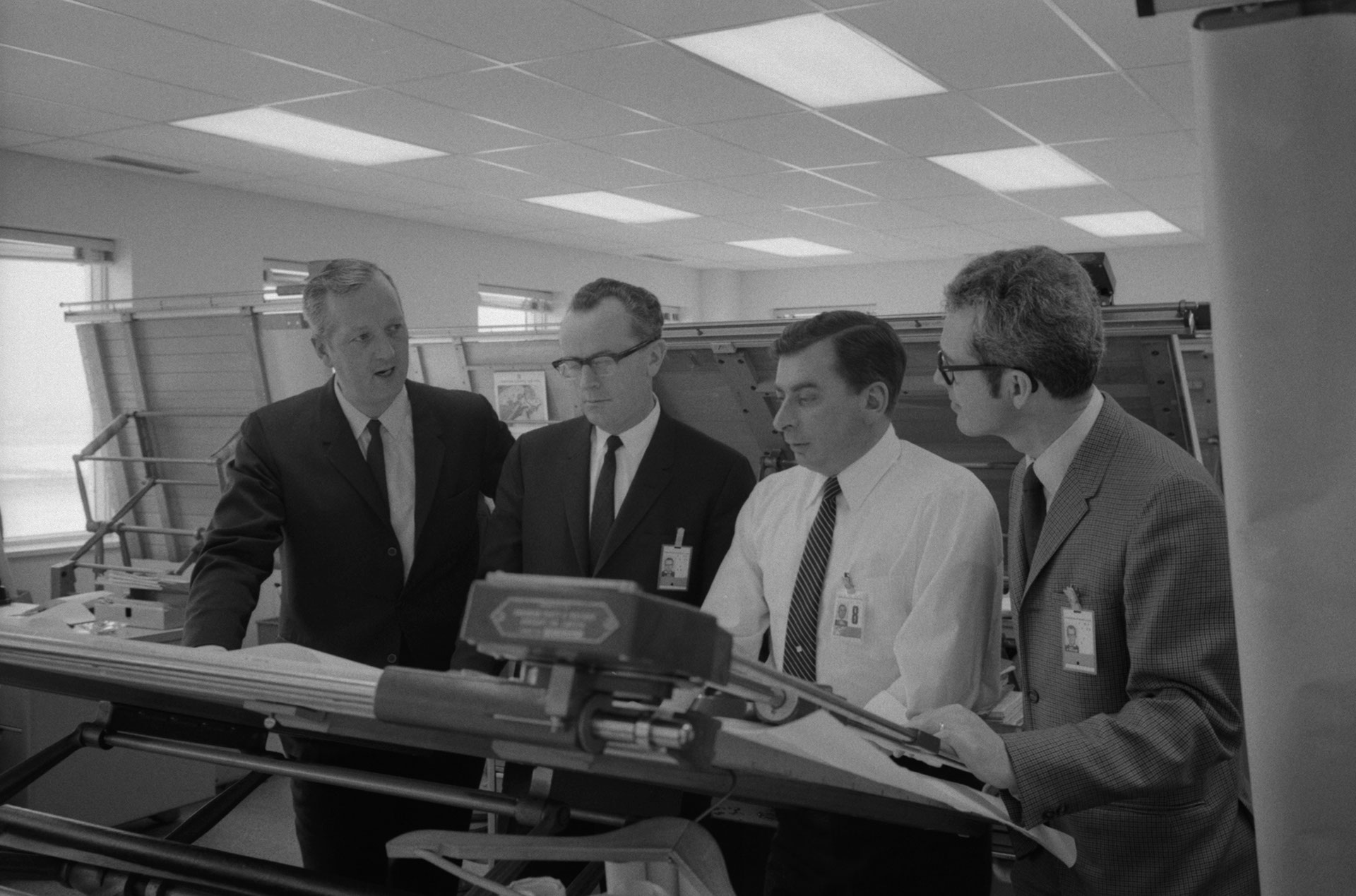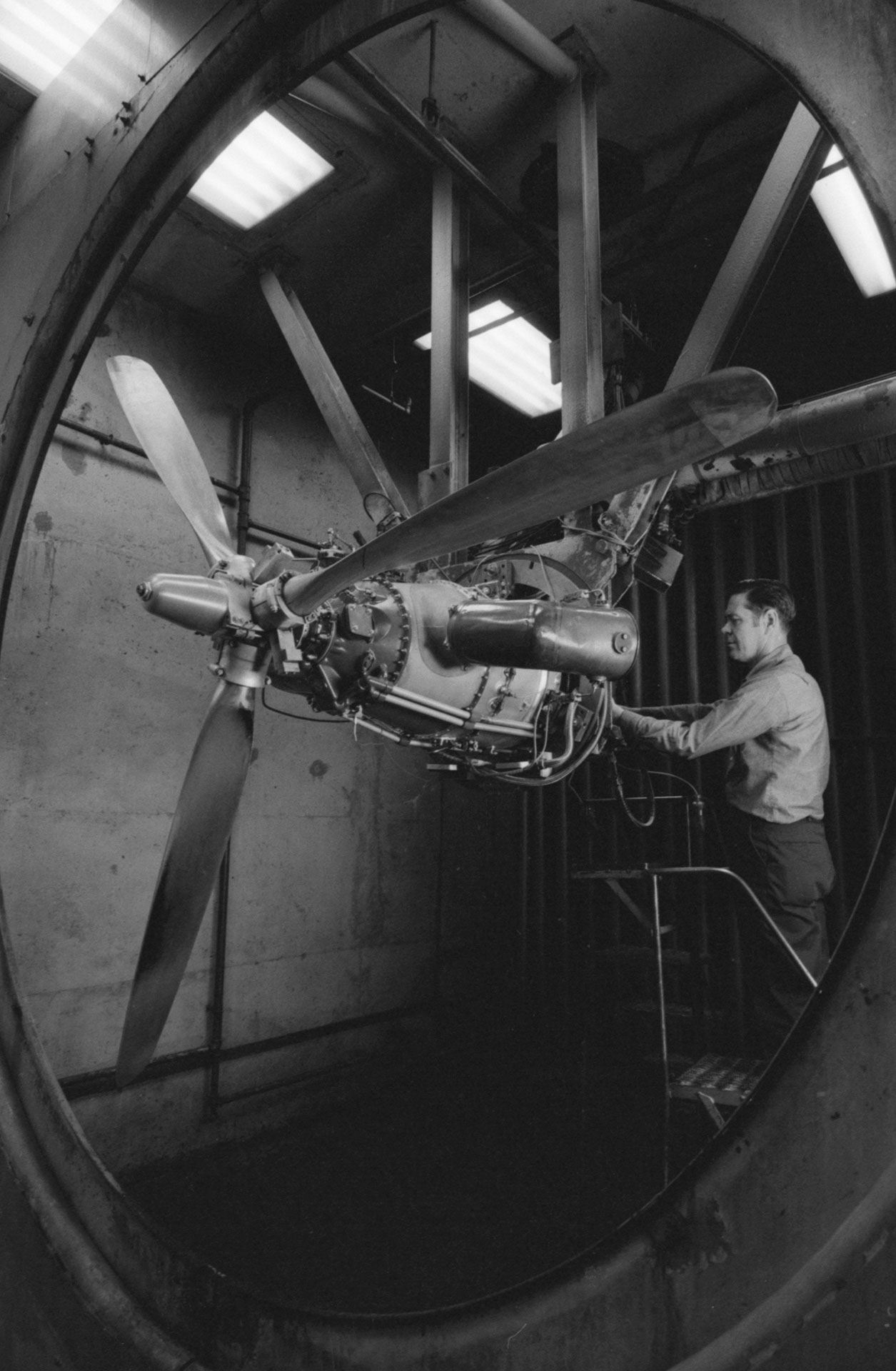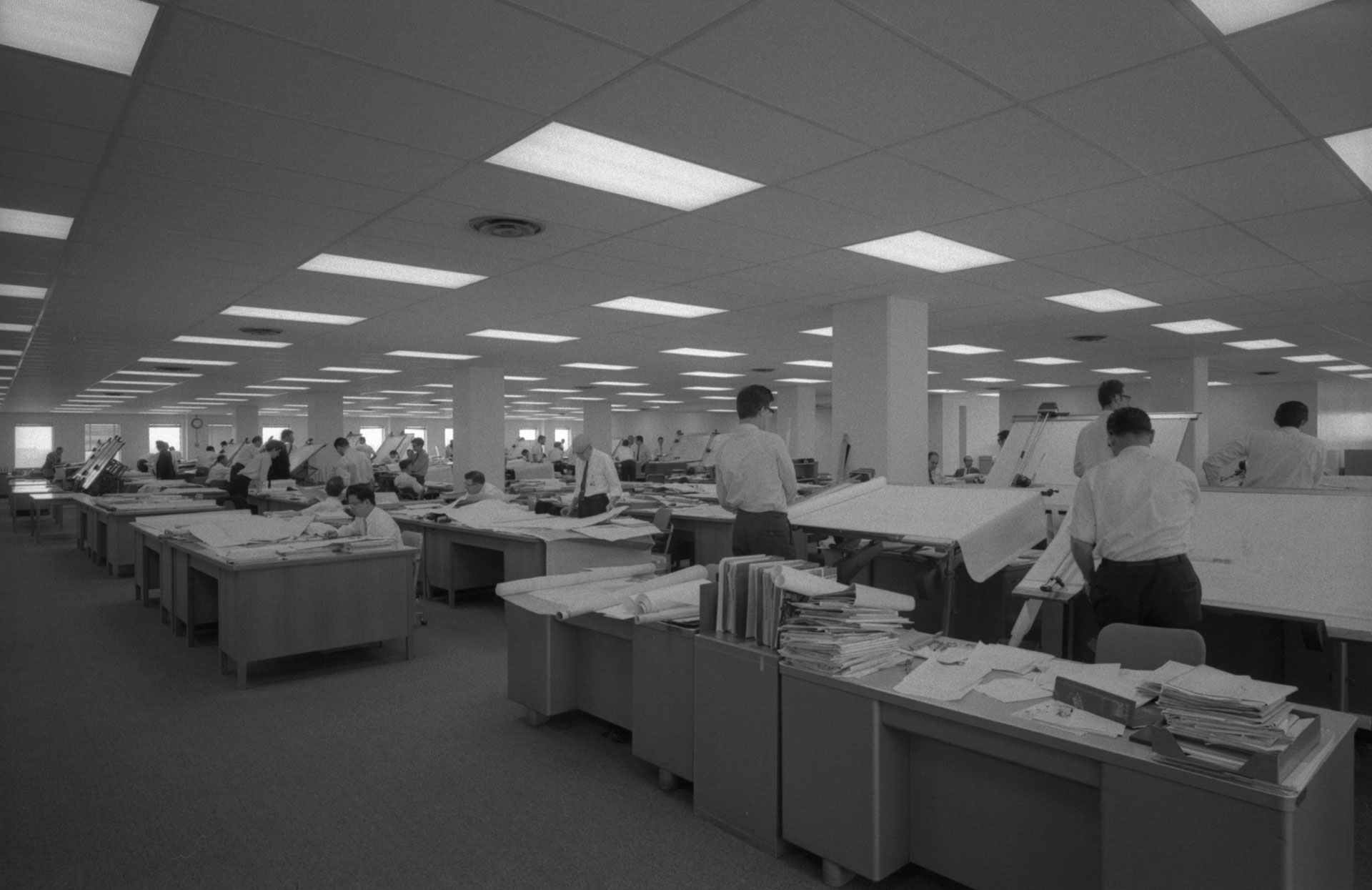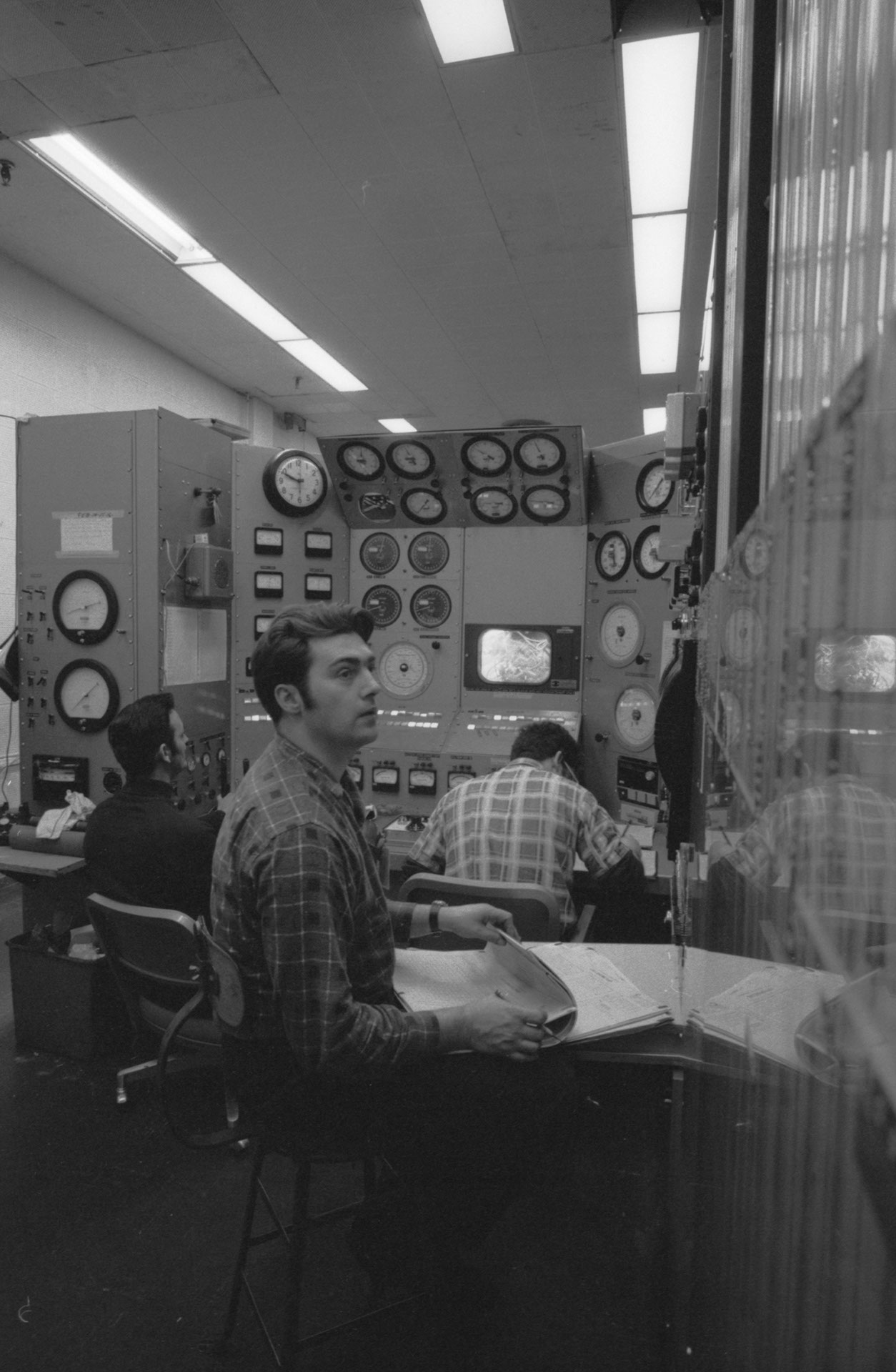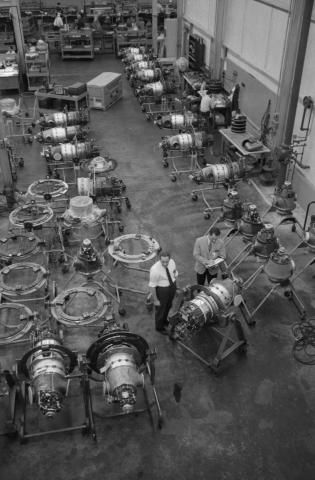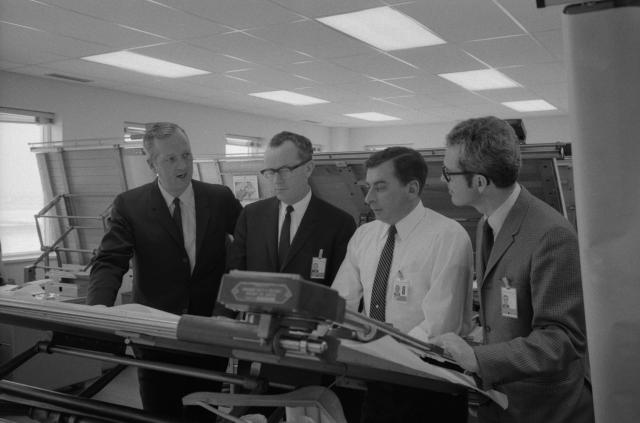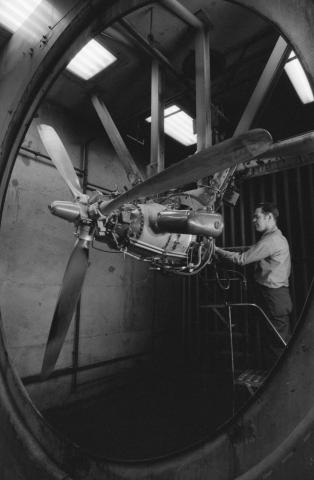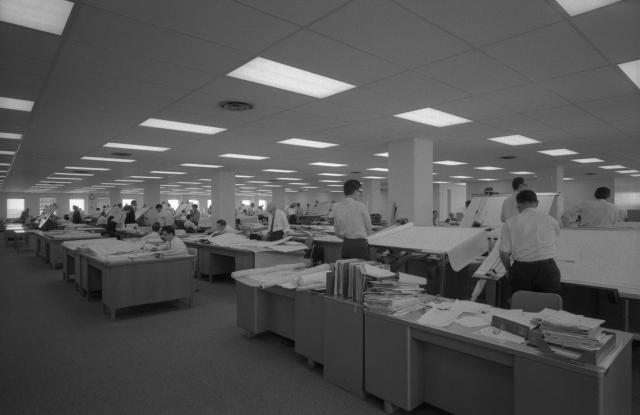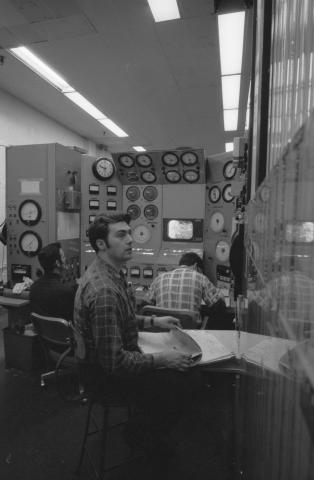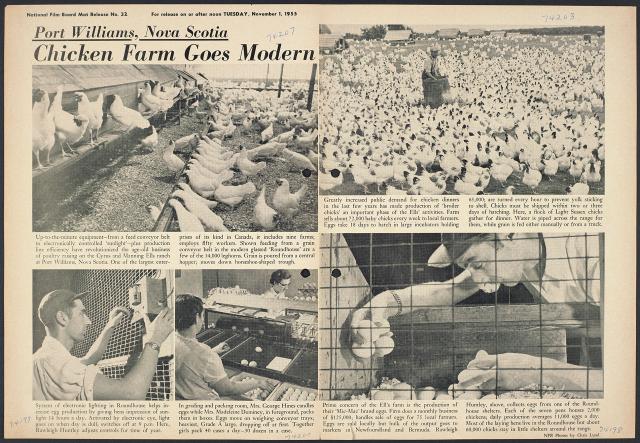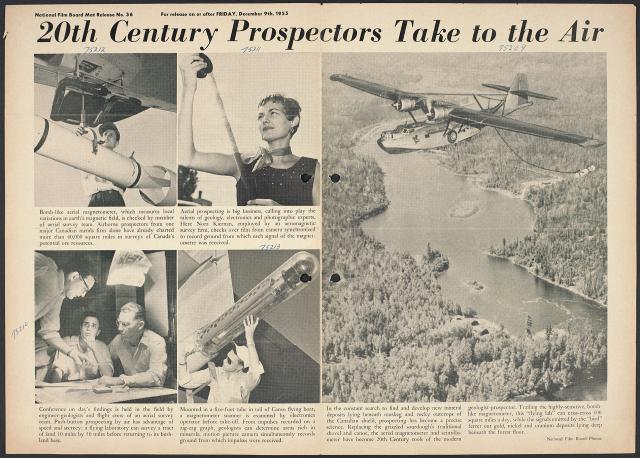
Photostory #492: Versatile Canadian Engine: A Gas Turbine for all Reasons
Photographers
Maker
National Film Board of Canada
Release Date
April 12, 1969
Collection
CMCP fonds
Credit Line
Canadian Museum of Contemporary Photography fonds, National Gallery of Canada Library and Archive
Main Text
Aircraft, big transport trucks, air-cushion vehicles, helicopters, boats, racing cars, high-speed trains, snowplows, industrial operations - all these are being powered by thousands of compact, high-performance gas-turbine engines designed and built in Montreal by United Aircraft of Canada Ltd. A decade ago a team of Canadian engineers began a study of turbine powerplants for medium-sized commercial aircraft. Their preliminary designs led to the company's testing of a prototype just one year later and the first certificated production engine followed in 1963. Since then the original 450-equivalent-shaft horsepower of the engine has been doubled (may soon be tripled) and new models and adaptations, including twinning, now provide the energy for an amazing variety of purposes. These include propulsion systems for destroyers, woodchipping units in the pulp and paper industry, a new German hot-tip helicopter, auxiliary power for the 350-passenger jet-liner giants coming in the seventies, and powering of oilwell fracturing units. Of special interest is the use of a twin-pac (two turbines working together) on helicopters. This innovation not only gives exceptional power for low fuel consumption but for the first time gives such helicopters, the two-engine reliability which is so urgently needed in the "dead man's zone" at low levels where normal autorotation (helicopter-style gliding) is impossible. Used on the railroads the same engine has propelled the new Turbotrains at speeds of over 170 miles per hour, and at Indianapolis one of three racing cars powered by this turbine set the current lap speed record. Only 62 inches long, with a diameter of 19 inches and a weight of 275 pounds, (some models are smaller) the present production engines develop about 750-equivalent-shaft-horsepower and can operate on a wide variety of fuels. In the air, on land and at sea, this fine engine in all its various adaptations, together with United Aircraft of Canada's new thrust turbofan just now coming into production, has become one of the most resounding success stories in Canadian aviation. Its design, development and world-wide use has placed its manufacturers in the forefront of reliable small gas-turbine technology.
Subjects:

